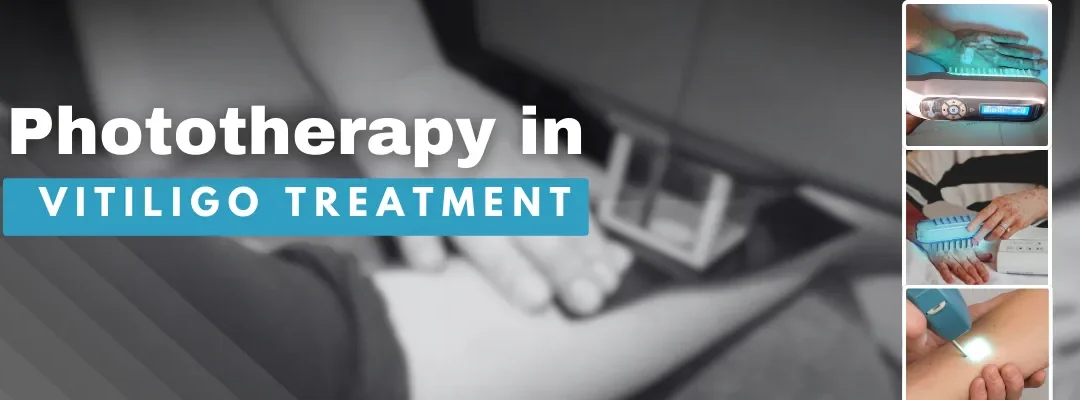Are you having white patches on your skin?
Are you seeking an effective vitiligo treatment in Faridabad?
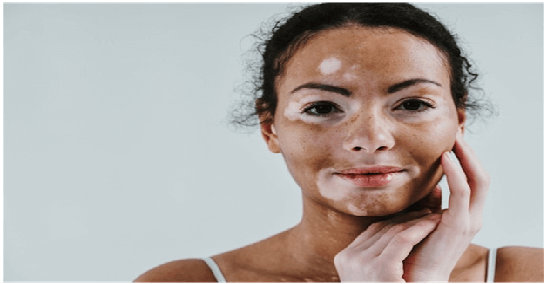
Vitiligo, while not contagious, can be challenging. But there’s good news! Phototherapy in vitiligo has emerged as a promising solution. Guided by experts like Dr. Archit Aggarwal, one of the best dermatologist in Faridabad, many are finding their way back to their natural skin tone.
Phototherapy in vitiligo is a clinically proven treatment. It uses controlled UV light to restore colour to white patches on the skin. With Dr. Archit Aggarwal’s expertise, this procedure is safe and effective. It helps improve skin tone to natural skin colour.
Embark on a journey to regain your natural skin colour through phototherapy. Under the guidance of experienced dermatologist Dr Archit Aggarwal, you will witness your skin transform and your confidence rise.
“Vitiligo is one chapter in your life, not the entire story. Let’s turn the page together.”
Introduction: Understanding Vitiligo
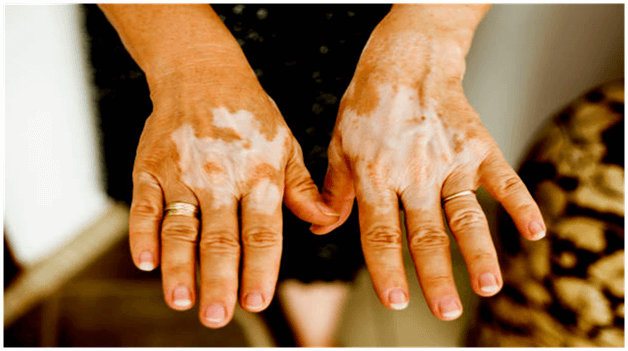
Vitiligo is a skin condition that causes white patches due to loss of skin pigment. It affects 0.5-2% of the world’s population, including tens of millions. It results from the loss of melanocytes, which produce skin pigment. Vitiligo can manifest at any age. But roughly 50% of cases appear before the age of 20, and 95% of cases occur before the age of 40. It affects both genders and all ethnicities.
There are several vitiligo treatments available. These include topical and oral drugs and surgical procedures. Among these, phototherapy stands out as a promising and non-invasive option. It uses UVB light to stimulate pigment production. This treatment aims to restore the skin’s natural tone.
“Let’s explore how this innovative treatment contributes to advancements in vitiligo care.”
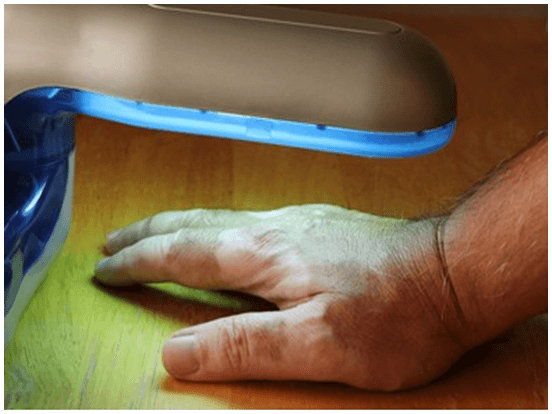
Understanding Phototherapy
Phototherapy, known as light therapy, uses specific light wavelengths to address various skin conditions. It involves exposing the skin to ultraviolet light in a controlled setting at a doctor’s office. This approach is effective for psoriasis, eczema, and vitiligo.
A Brief History of Phototherapy
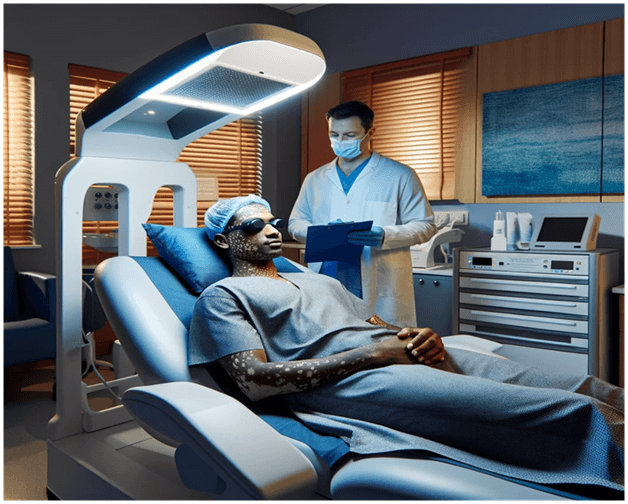
Phototherapy has ancient origins. For instance, the Egyptians practiced heliotherapy, utilizing sunlight to treat ailments. In the 20th century, Niels Ryberg Finsen led the way in modern phototherapy by discovering that UV light could treat lupus vulgaris. It is a type of skin tuberculosis. His work earned him the Nobel Prize in Medicine in 1903.
By the 1920s and 1930s, phototherapy was used to treat conditions like rickets and jaundice. Technological advances and ongoing research have established phototherapy as a valuable tool in dermatology.
Today, phototherapy is a testament to the combination of ancient knowledge and modern science. It continues to evolve and is a ray of hope for those dealing with skin conditions like vitiligo.
Wondering how it works? Here’s the science bit: Mechanism of Phototherapy in Vitiligo
Phototherapy emerges as a promising treatment option for vitiligo. Let’s explore how it functions and compare two popular types: UVB and PUVA phototherapy in Faridabad.
1.How Phototherapy Stimulates Melanocyte Proliferation and Migration?
Phototherapy uses light to even out skin tone by stimulating melanocytes. It triggers cellular repair mechanisms. This leads to the regeneration and migration of melanocytes.
2.Stimulating Melanocyte Proliferation:
Phototherapy induces the production of certain growth factors that stimulate melanocytes to multiply. These growth factors include stem cell factor (SCF) and basic fibroblast growth factor (bFGF).
3.Encouraging Melanocyte Migration:
The treatment also encourages melanocytes to migrate from the hair follicles to the affected areas. This aids in the repigmentation of the skin.
Comparing UVB and PUVA Phototherapy
Both UVB and PUVA phototherapy are effective in treating vitiligo. But there are key differences:
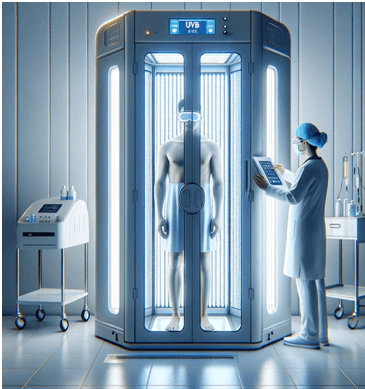
1. UVB Phototherapy:
- Treatment Process:
UVB light therapy for vitiligo uses ultraviolet B light, typically with a wavelength of 311-312 nm.
- Efficacy:
Narrowband UVB is considered more effective. It is commonly used for widespread vitiligo.
- Side Effects:
It is generally safer and has fewer side effects.
- Convenience:
UVB light for vitiligo treatment is often administered at home or in a clinic, making it more accessible.
2. PUVA Phototherapy:
- Treatment Process:
PUVA stands for Psoralen + UVA, combining a drug (psoralen) with UVA light therapy.
- Efficacy:
PUVA is perfect for smaller, more localized vitiligo patches.
- Side Effects:
It may cause nausea, itching, and an increased risk of sunburn.
- Convenience:
PUVA requires more frequent clinic visits.
“Both UVB and PUVA phototherapy in Faridabad at KDC Skin Clinic have proven beneficial in managing vitiligo in many patients,” mentions Dr Archit Aggarwal.”
“The choice between them often depends on factors such as the vitiligo’s extent, patient preference, and treatment convenience.”
Thinking of phototherapy? Let’s check out the perks:
Benefits of Phototherapy in Vitiligo

1. Repigmentation of Skin:
- Phototherapy stimulates the melanocytes, helping restore skin colour.
- After consistent sessions, you can notice results.
2. Non-Invasive and Pain-Free:
- Unlike surgeries, phototherapy or light therapy for vitiligo is non-invasive.
- Patients find the treatment comfortable and pain-free.
3. Suitable for Large Areas:
- It is efficient in treating large areas of the skin at once.
- It is especially beneficial for widespread vitiligo.
4. Boosted Self-Esteem and Quality of Life:
- Improvement in appearance often leads to enhanced self-esteem.
- Patients report a better quality of life post-treatment.
5. Minimal Side Effects:
- Compared to oral medications, phototherapy has fewer side effects.
- Mild reactions may include temporary redness or dry skin.
6. Combination Therapy:
- Skin experts can combine phototherapy with other treatments for better results.
- For instance, topical medications may enhance the effects of phototherapy.
7. Accessible and Convenient:
- Many dermatology clinics offer phototherapy treatment for vitiligo.
- Some portable devices are also available for at-home treatment.
Phototherapy benefits people with vitiligo, as it encourages skin repigmentation and enhances self-confidence. Yet, consulting a skilled skin specialist in Faridabad, like Dr Archit Aggarwal, is crucial to determining the best treatment plan tailored to your needs.
But wait, what about the drawbacks? Here they are:
Potential Side Effects of Phototherapy for vitiligo
While phototherapy offers many benefits, it is crucial to be aware of its potential side effects:
- Burns:
Like natural sunlight, too much vitiligo ultraviolet light therapy can cause skin burns.
- Blisters:
If the UV dosage is excessive, blisters may appear on the treated areas.
- Increased Risk of Skin Cancer:
Consistent and prolonged exposure to UV light, particularly in PUVA therapy, can elevate the risk of skin cancers. These include melanoma and non-melanoma types.
Given these potential side effects, the Importance of Personalized Treatment Plans cannot be overstated:
- Tailored Dosage:
Every individual’s skin responds differently to vitiligo ultraviolet light therapy. A dermatologist will carefully determine the appropriate light dosage and duration for each patient to minimize risks.
- Regular Monitoring:
Frequent check-ins allow the dermatologist to assess the progress and make necessary adjustments. This ensures the treatment remains safe and effective.
- Protective Measures:
Skin experts often instruct patients to wear protective eyewear during sessions. They also recommend applying sunscreen or other protective measures afterward.
- Informed Decision Making:
Patients must know the pros, cons, and options to make informed choices.
“Customized treatment plans are crucial to maximize phototherapy benefits and minimize risks, as each patient is unique.”
Comparing Phototherapy with Other Vitiligo Treatments
1. Topical Treatments:
- Cost:
Topical treatments such as corticosteroids and calcineurin inhibitors are often less expensive than phototherapy. Yet, costs can increase with long-term use.
- Time:
These treatments usually require daily application, which may be time-consuming.
- Effectiveness:
Topicals can be effective, particularly in the early stages or for localized areas. However, they may not be as quick or effective for widespread vitiligo as phototherapy.
2. Systemic Treatments:
- Cost:
Treatments like oral corticosteroids or immunosuppressive drugs can be relatively expensive.
- Time:
While potentially requiring less daily time than topicals, they necessitate regular doctor visits for monitoring.
- Effectiveness:
Systemic treatments can be effective for extensive or rapidly spreading vitiligo. But they may have side effects on internal organs.
3. Surgical Options (like skin grafting):

- Cost:
Surgical interventions are typically the most expensive upfront. However, they can offer more permanent solutions, potentially offsetting long-term treatment costs.
- Time:
Surgical options require preparation, recovery, and post-op care. This could mean significant time off work or daily activities.
- Effectiveness:
They can be highly effective, especially for patients who don’t respond to other treatments. But they come with the usual surgical risks and the potential for scarring.
4.Phototherapy

- Cost:
Phototherapy sessions might seem costly initially, especially when multiple sessions are required. However, they can offer a balance between cost and effectiveness over time.
- Time:
Regular sessions, often multiple times a week, are required. The total duration of treatment can vary based on individual response.
- Effectiveness:
Phototherapy has been effective for many vitiligo patients, especially for specific types or areas.
The selection among these treatments depends on factors such as the patient’s condition, extent and type of vitiligo, financial considerations, and personal preferences. A thorough discussion with a dermatologist can help guide patients to the most suitable treatment for their needs.
Regain your natural skin colour with cutting-edge vitiligo treatments in Faridabad. Schedule your consultation today!
Before and After Photos Showcasing the Effectiveness of Phototherapy
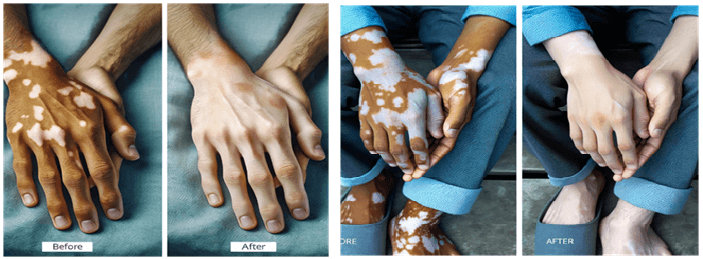
Take a moment to explore these transformative before and after photos, where phototherapy brings a remarkable change to the lives of vitiligo patients.
A Brief History of Phototherapy

Conclusion
Navigating the challenges of vitiligo can be daunting. But with treatments like phototherapy in vitiligo, there is a glimmer of hope. Thanks to experts like Dr. Archit Aggarwal, widely considered as one of the top dermatologist in Faridabad, you can look forward to cured skin and renewed self-confidence.
FAQs:
1. How effective is phototherapy in vitiligo treatment?
Phototherapy is a proven treatment option for many individuals with vitiligo. It is highly effective for vitiligo in certain body areas like the face and trunk. The extent of repigmentation varies, but patients commonly notice a significant improvement.
2. Are there any side effects associated with phototherapy?
Yes, phototherapy may cause skin burns and blisters. Prolonged and repeated exposure may also elevate the risk of skin cancers. To minimize these risks, it is crucial to adhere to the dermatologist’s guidelines and take protective measures.
3. How long does it take to see results with phototherapy?
The time to see results can vary based on individual factors and the extent of vitiligo. Some patients see improvement within weeks, while others may take months. Consistency in attending sessions and following the dermatologist’s advice is crucial for the best phototherapy for vitiligo results.
4. Is phototherapy a permanent solution for vitiligo?
Phototherapy can bring about significant repigmentation. But it may not permanently cure vitiligo. Maintenance sessions may be necessary, and vitiligo patches could reappear or spread.
5. Can phototherapy be combined with other vitiligo treatments?
Yes. Dermatologists often recommend a combination approach for optimal results. Combining phototherapy with topical or oral treatments can enhance its effectiveness. It can help achieve faster repigmentation.
6.How to find a reliable clinic offering phototherapy for vitiligo?
To find a trustworthy clinic like KDC Skin Clinic in Faridabad, offering phototherapy for vitiligo, start by researching local dermatology clinics and checking their reviews and ratings online. Additionally, seeking recommendations from healthcare professionals or individuals who have undergone the treatment can be helpful.

